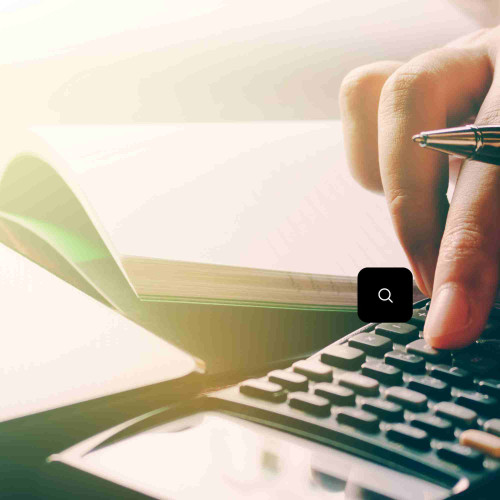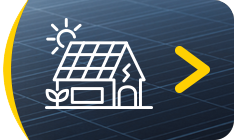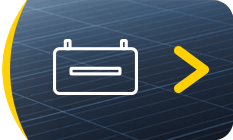- 06 Jun, 2023
- Solar Training , Definitions , Self-consumption , Using and installation

Installing photovoltaic solar panels is an increasingly popular way of generating electricity from renewable sources. However, before embarking on such a project, it's important to understand the criteria that need to be taken into account to assess its profitability.
Criteria to take into account when calculating profitability
Initial investment in the photovoltaic system
The first criterion is the initial investment. This covers the cost of the solar panels, inverters, batteries (if required) and installation costs. The greater the investment, the longer the payback period.
Electricity production from your solar panels
Next, you need to estimate the annual electricity production from your solar panels, based on the power of the panels and the amount of local sunshine. The sunnier the region, the more efficient your panels will be. The European Community website offers a PV GIS tool for calculating solar production at your address.
Your usual electricity consumption
It's also important to estimate your annual electricity consumption and calculate the proportion covered by the solar panels. The profitability of your installation will depend on your level of self-consumption. If you consume all your electricity, you will obviously be more profitable.
Electricity prices in 2023
Finally, you need to compare the cost of the electricity produced by your solar panels with the cost of electricity from the grid.
Your self-consumption naturally reduces your energy bill, by being valued at the price per kWh (including tax) saved, i.e. if you are with EDF at 6 kVA, around €0.2228 (including tax) at peak times, depending on your contract.
Lifespan and maintenance of your solar panel installation
It's also important to consider the lifespan and maintenance of your solar panels. You need to estimate the costs of maintenance and replacement of faulty components. At Alma Solar, our panels are guaranteed to last 30 years. However, the inverter needs to be replaced every 10 to 15 years.
Example of profitability calculation
To illustrate the profitability calculation, let's take the example of a photovoltaic solar panel installation on the roof of a house for a household of 4 people in Aix-en-Provence. The average electricity consumption of French people in this configuration is 4,700 kWh per year, or around 390 per month.
We saw on the PV GIS that solar production in Aix-en-Provence was at least 368 kW per month, which covers our theoretical monthly requirement.
We therefore need an installation of at least 4 kWp to produce enough electricity to cover our needs.
Using our advanced configurator, we came up with the following proposal for a turnkey installation without storage (and therefore without batteries):
- 10 solar panels 410W €1800
- 6 kW inverter €940
- Miscellaneous boxes and accessories €1860
- Workee installation 2800€.
Please note that we have chosen an inverter that is more powerful than we need in order to make our installation scalable over time to allow for greater production if necessary.
The total cost of the installation is therefore €7400 including VAT, which corresponds to a price per kW of €0.07 over 20 years.
In this case, the return on investment will be around 7 years.
Financial assistance for installing solar panels in 2023 : The self-consumption bonus
If you agree to sell the energy you don't use instead of storing it in a battery for later use, the surplus you produce will be sold directly to EDF to feed into the public electricity grid. The feed-in tariff in 2023 is €0.15 per kWh. However, it's important to note that the amount received must be declared and counts as taxable income.
On the other hand, if you opt to buy back the surplus, you'll receive a self-consumption bonus, which is not means-tested and is calculated according to the output of your installation (€500/kWp for output under 3kWp, €370/kWp for output between 3 and 9kWp, €210 between 9 and 36kWp and €110 above that).
Self-consumption with sale of the surplus is a very attractive solution for solar panel owners. It reduces the cost of electricity and makes the most of surplus production.
It's important to take this option into account when calculating the profitability of your solar panel installation. In fact, this solution may be the most cost-effective, depending on your electricity consumption and the output of your solar panels. In our example above, for 4kWp, you will receive a premium of €4x370, paid in a single instalment on the anniversary date of your installation. This will reduce the return on your equipment to less than 6 years, not counting the value of the surplus sold on.
There are other forms of financial assistance available for installing solar panels, such as tax credits, grants and interest-free loans. It's important to find out about the conditions under which these are available and how to apply.
In conclusion, installing photovoltaic solar panels can be profitable in the long term, but it's important to weigh up the costs and benefits carefully before embarking on such a project. Financial assistance can also help reduce the initial investment.
In 2023, an installation will pay for itself in between 6 and 10 years, and with electricity prices rising and photovoltaics becoming more widely available, profitability is continuing to improve. As you can see, solar energy has a promising future and is contributing to the transition to more sustainable, environmentally-friendly energy sources.
To make sure you're making the right choice, use our online configurator to determine your exact requirements in complete transparency. At Alma Solar, we're here to support you from the choice of equipment right through to installation, thanks to our Workee installer partners who are RGE-certified.










